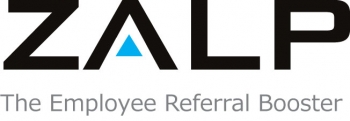Some Secrets Of Employee Referrals Which You Might Not Know

Employee referral programs are generally launched with the presumption that employees scan their connections to refer relevant candidates for the job opening and get rewarded if their referrals are successfully hired. The recruiters are expected to step into the referral process only once a candidate has been referred by an employee. He or she is not expected to play any role in the referral process except to administer the recruitment process. This is the big secret for success of employee referral programs, one which a lot of us are unaware of. Have you ever wondered why your referral program is not doing as well as some others even though you have good employee participation in the program?
The secret lies in the heavy lifting that recruiters are expected to do in the referral program in these organizations.
In organizations with highly successful employee referral programs, the talent acquisition team is infact required to source and direct employee networks. This could mean connecting to your employees on LinkedIn and then mapping employee networks. Graphing employee networks and then approaching employees to facilitate the conversation is a proactive approach to referrals that is behind the success of the referral program in quite a few organizations. Once you have graphed out the employee network, you can then bring it to the employee’s attention and work with him or her on next steps to take the referral forward. This would mean checking with the employee their degree of acquaintance with the connection, and whether they would recommend them as good potential employees. Employees can then be asked to choose their preferred method of introduction, whether they would prefer the recruiter to send the candidate a LinkedIn request with his reference or they would prefer to get in touch with the candidate to introduce the recruiter.
The advantage of adopting the proactive route to referrals is that firstly recruiters are more adept at linking connections and identifying promising candidates than employees who might be too occupied with other work to do a thorough scanning of their network. Quite often they simply choose to refer whoever approaches them for reference for a job opening. Secondly, it saves employees a lot of time and effort since most of the work is already done by the talent acquisition team and makes them more willing to approach the connections mapped out for possible referral.
Giving employees the option to just introduce the referral and still earn rewards can be a win-win situation for all concerned. The employee is happy since he does not have do much beyond facilitate the introduction and still earn a reward and the organization benefits by getting access to a network of potential employees. Now that you know the secret behind the success of referral program, start getting your talent acquisition team to make focused efforts with the referral process.
